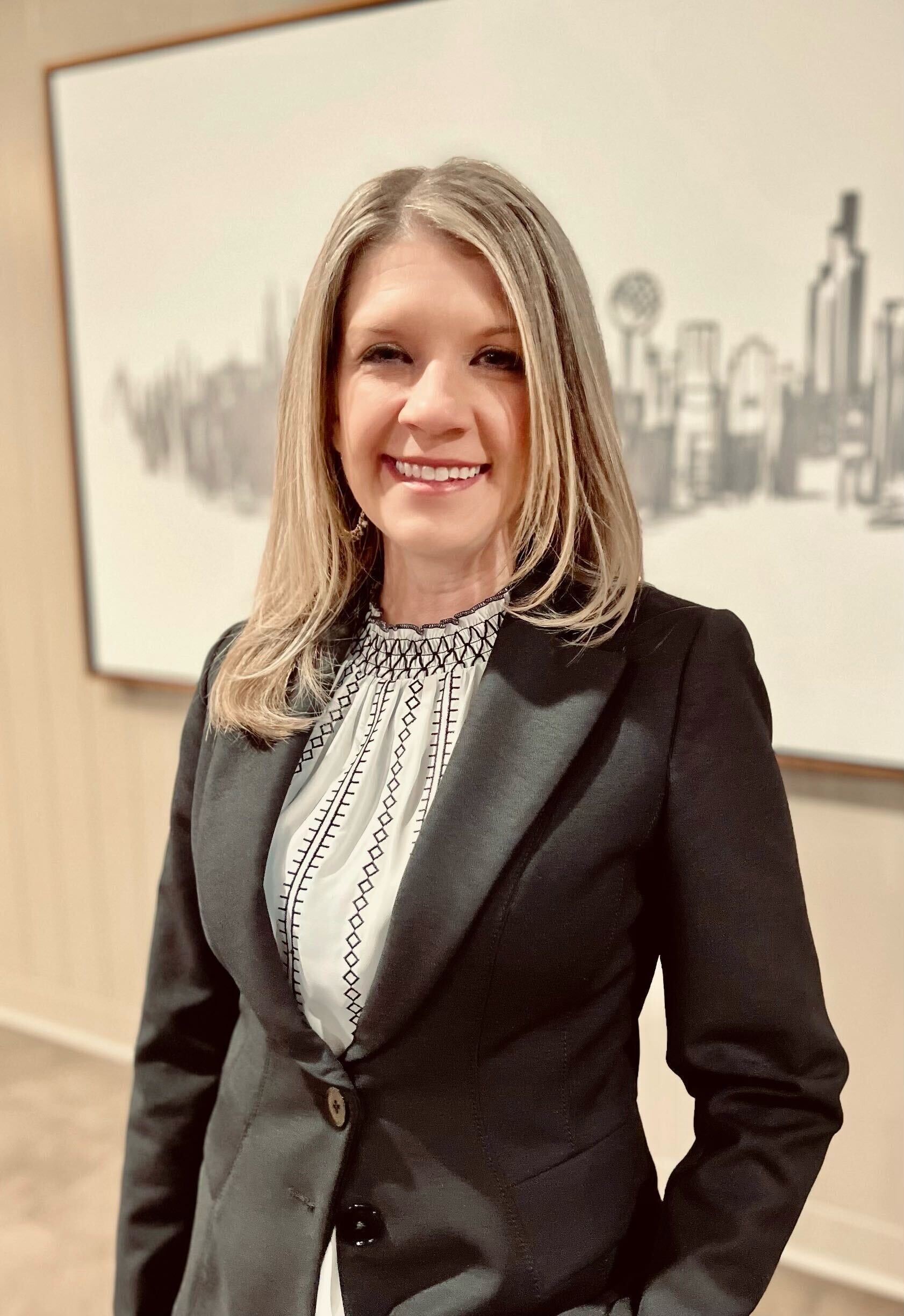The goal of home-based care is to provide comprehensive care that helps patients meet their specific goals, whether through home health or hospice, wherever they call home. However, there are times when a patient might need other home-based care that falls outside the scope of home health or hospice.
To align with the goal of keeping patients safe at home, Enhabit Home Health & Hospice identified a need for collaborative care with other home-based care providers.
The goal of these collaborative relationships is simple: Each provider will continue to put patients first and help them remain in the comfort of their homes, even during times that are outside of their scope of services.
Creating an ecosystem of resources for patients needing home-based care
Kasi Hedt, senior vice president of specialty programs at Enhabit, calls these collaborative relationships an “ecosystem of resources.” Each home-based care provider contributes a different scope of service to a larger comprehensive care network.
“Enhabit has two main priorities: providing the best care to our patients and empowering our employees to do just that,” she said. “Creating collaborative relationships and an ecosystem of resources helps us better serve these patients and close the gaps in care.”
What is a gap in care?
A gap in care can be best defined as a time when a patient needs a specific service that a provider is unable to perform. It’s similar to how a grocery store only carries groceries, not clothes or shoes. You have to go to a clothing store to purchase clothing items.
The same goes for health care providers. Each provider has their unique scope of services. But as more older adults prefer to age in place, health care providers are identifying new and innovative ways to provide more care in the home. This is opening the door for patients to remain in the comfort of home while receiving the appropriate level of care they need, leading to fewer gaps in care.
For example, if a home health patient suddenly required urgent care, that patient historically would be required to go to a clinic to receive the care they need. But as more health care providers move to the home, there is now opportunity for patients to receive urgent care at home. This allows them to get the care they need while remaining in their most comfortable environment.
“Patients are going home from health care systems quicker and sicker and with higher acuity and complexity of needs,” Hedt said. “So, the creation of this ecosystem of resources came off the understanding that home health and hospice providers can’t do it all by ourselves.”
As the need for home-based care increases, so does the need for collaboration between providers. And Enhabit is starting those conversations.
Putting home-based care ecosystems into action
While many providers are recognizing the need for collaborative home-based care relationships, Enhabit is working to expand the ecosystem.
One example of how Enhabit is expanding the ecosystem of resources for patients is through their collaborative relationship with FirstLight Home Care, which provides non-medical and companionship in-home care, and Dispatch Health, which brings urgent care to the home to avoid trips to the emergency room. Enhabit collaborates with these partners in certain markets to fill gaps in care and keep patients safe at home.
Whenever Enhabit was seeing a patient who needed additional services outside of the scope of home health or hospice, such as companionship care, they would put them directly in touch with another home-based care provider in the ecosystem.
Being able to supplement the care provided has benefits – including keeping patients happier, at home longer and avoiding unnecessary or frequent trips to the hospital.
Focusing on early intervention
A main focus for Enhabit is to mitigate problems before they arise. This means the patient doesn’t have to worry about the aftermath and can instead focus on staying healthy.
And early intervention is an important focus for home health care. According to a study done by JAMA, only 54% of patients discharged from the hospital with a home health referral receive services within 14 days.
Enhabit’s goal is to provide timely care and get out to a patient’s home within 24-48 hours.
A collaboration between home-based providers can help improve outcomes by transitioning patients safely home and following Enhabit’s approach of immediately starting services or pulling in resources to keep them there and prevent any further hospitalizations.
“There are so many resources that are outside of our home health and hospices services that can be used proactively and timely,” Hedt said. “Using these resources, clinicians can practice early intervention and address any changes in conditions that might lead to a larger problem with the patient. And ultimately, we can keep them home and prevent them from having to go to the hospital.”
Collaboration in home-based care breeds education and learning
Patients aren’t the only ones benefitting from this ecosystem of resources – the home-based care providers are as well. These partnerships have created learning opportunities and identified areas of growth for each organization involved.
“Contrary to what we believed, our teams did not have a strong understanding of the companies we were collaborating with at first,” Hedt said. “Our home health and hospice teams weren’t entirely clear on what private duty home care offers so that provided an opportunity for education on those services. It really came down to learning more about each other and filling in our own knowledge gaps.”

When Enhabit’s collaborations first started taking place, the teamwork started almost immediately. Enhabit would bring a patient’s case to the table. Then, each organization would weigh in with their thoughts and service offerings. Finally, a plan of care would be established as appropriate to meet the patient’s care needs. This created ideas and momentum that couldn’t have happened without the other organizations, according to Hedt.
“During these meetings, we would connect with local teams and talk through how they can best work together to meet the needs of our patients,” she said. “As we know and learn more, we will be able to have greater ideas, plan to scale and make adjustments to better serve our patients.”
Empowering patients and clinicians
Patients oftentimes leave the hospital before they are strong enough to do so. This was the case with Anastasia, a patient with FirstLight Home Care. Anastasia’s private duty caregiver noticed signs of weakness in Anastasia after she returned home from the hospital.
The caregiver immediately contacted her ecosystem of resources and informed the Enhabit team. Enhabit came out within 48 hours, did an assessment on Anastasia and determined she needed home health physical therapy.
After starting care with Enhabit, Anastasia’s neighbor noticed how strong she was getting from having her needs met with both home care and home health. Anastasia’s caregiver began working with her neighbor too. Ultimately, she recommended Enhabit’s services to help her increase her mobility and strength as well.
“I think that’s great success,” Hedt said. “One, it obviously helped Anastasia enough where she could tell her neighbor about her recovery. But also, the private duty caregiver, who can’t provide physical therapy, felt so empowered to be able to bring in a resource like Enhabit so her patient could get stronger.”
Collaboration is key in keeping patients home
If Hedt could use one word to describe these relationships in the home-based care space, it would be collaboration.
“The level of collaboration is so important and we are to a point where with the number of patients coming out of the hospital and the level of complexity of those patients, we have to get collaborative and join forces with our ecosystem partners,” she said. “What works well for one market might not work well for another so we are always looking for more opportunities to build relationships with other home-based care providers.”
Partnerships between home-based care providers allow patients to have access to a wider pool of resources and care. Relationships like the ones Enhabit has created and is looking to build upon have the potential to help the aging population meet their health care goals and needs.
“It all comes down to meeting the patients where they are,” Hedt said. “Whatever their specific, unique needs are, we meet them where they are at and wrap our services and our ecosystem of resources around that patient to make sure they can age in place.”
 Back to Resource library
Back to Resource library
Browse top categories
Social Share
At Enhabit our patients are our number one priority. From providing the latest medical practices to building deep personal connections, we’re focused on upholding every patient’s dignity, humanity and sense of control on their health care journey.
Home health
Our home health services give patients access to the care they deserve in the comfort of their own homes. From disease and injury management to recovery from surgery, our clinicians help patients confidently achieve their healthcare goals.
Hospice care
Our hospice care services place importance on the comfort of every patient living with a terminal illness. Our caring professionals are dedicated to providing not just physical care, but spiritual and emotional support to every patient and their loved ones.







